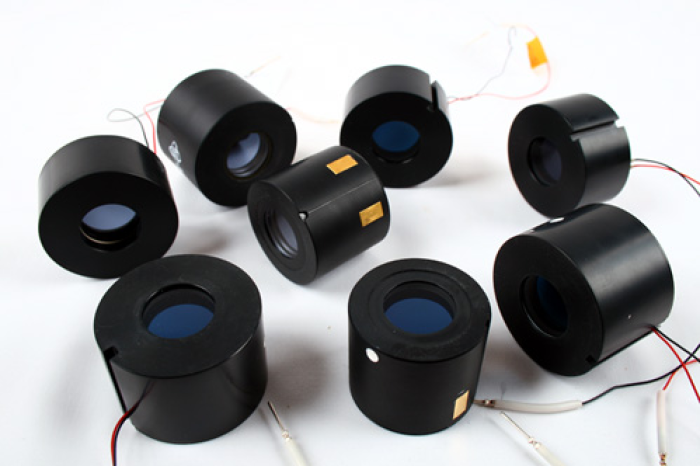How Night Vision Works – Part 2

Low-Light Imaging -
Today, the most popular and well recognised method of conducting night vision covert surveillance is based on the use of Image Intensified Night Vision Devices (NVD's) & Night Vision Goggles (NVG's). Image intensifiers are commonly used in night vision goggles and night scopes. More recently, on-chip gain multiplication CCD cameras have become popularized for performing low-light security, surveillance and astronomical observation.
Image Intensifiers -
This method of night vision amplifies the available ambient light to maximise better vision. An objective lens focuses the available ambient light (photons) onto the photocathode of the image intensifier. The light energy causes electrons to be released from the cathode which are then accelerated by an electric field to increase their energy level (speed). These electrons enter holes in the microchannel plate & 'bounce off' the internal specially-coated walls, generating more electrons as the electrons bounce through. This creates a denser 'cloud' of electrons representing an intensified version of the original image.
HOW THEY WORK: This method of night vision amplifies the available light to maximise the best low-light vision. An objective lens focuses available light (photons) on the photocathode of an image intensifier tube (IIT). The light energy creates electrons released from the cathode which are subsequently accelerated by an electric field to increase their speed (energy level). These electrons enter holes in the microchannel plate & bounce off the internal specially-coated walls which generate more electrons as the electrons bounce through. This creates a denser "cloud" of electrons representing an intensified version of the original image.
The final stage of the image intensifier involves electrons striking a phosphor screen. The energy of the electrons results in 'phosphor glow'. The visual light shows the desired view to the user or to an attached photographic camera or video device. A green phosphor is used in these applications because the human eye can differentiate more shades of green than any other color, allowing for greater differentiation of objects in the picture.
All image intensifiers operate in the above fashion.
Technological differences over the past 40 years have resulted in substantial improvements to the performance of these devices. The different criterion's of technology have been commonly identified by distinct generations of image intensifiers. Intensified camera systems usually incorporate an image intensifier to create a brighter image of the low-light scene which is then viewed by a traditional camera.
Part 3 coming soon...
Categories
- Blogs (55)
- Latest Products (3)
Recent Posts
Archives
- February 2016 (1)
- October 2015 (1)
- August 2015 (1)
- April 2014 (1)
- March 2014 (5)
- February 2014 (5)
- January 2014 (1)
- December 2013 (1)
- November 2013 (1)
- September 2013 (1)
- August 2013 (2)
- July 2013 (1)
- June 2013 (3)
- April 2013 (2)
- February 2013 (2)
- October 2012 (1)
- July 2012 (1)
- January 2012 (1)
- December 2010 (1)
- December 2009 (1)
- February 2008 (1)
- January 2007 (1)
- December 2006 (1)
- January 2006 (1)
- December 2005 (1)
- November 2005 (2)
- April 2005 (1)
- March 2005 (1)
- November 2004 (1)
- July 2004 (1)
- June 2004 (1)
- May 2004 (1)
- February 2004 (1)
- May 2003 (1)
- April 2003 (1)
- July 2002 (2)
- June 2002 (1)
- December 2001 (2)
- July 2001 (1)
- May 2001 (1)
- February 2001 (1)


